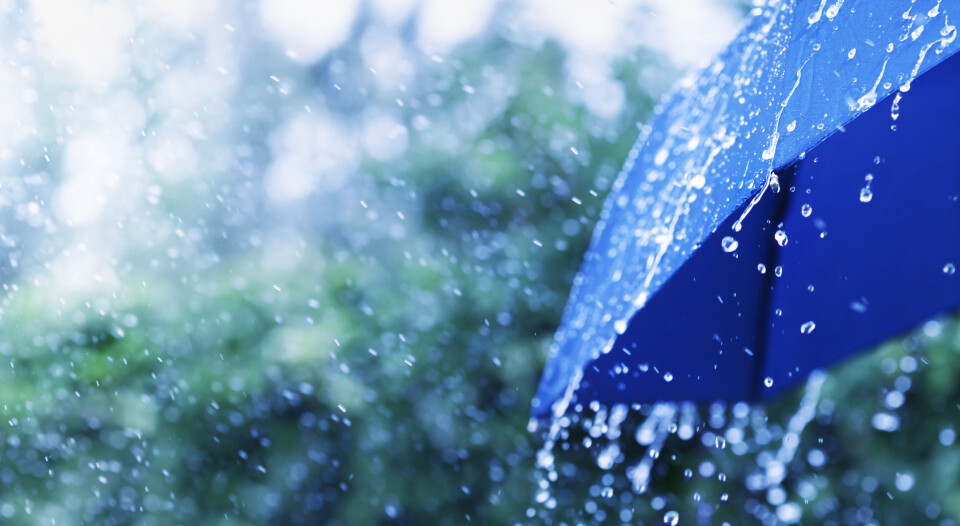-
France braces for a chilly end to 2025
French weekly weather forecast December 29 - January 2 sees temperatures drop to below freezing in many areas
-
France sees coldest Christmas Day in 15 years as ‘grand froid’ plan triggered
Sharp drop in temperature sees cold weather plan activated in more than a dozen departments
-
The origins and meaning of tirer les marrons du feu
As Christmas approaches, we look at a phrase to describe someone who takes advantage of a situation
MAP: Which French town has the most rain? (Clue: it's not in Brittany)
We look the country’s wettest and driest towns and the climatic and geographical reasons behind this

After a summer characterised by a severe drought, France is now experiencing storms bringing heavy rainfall, with areas of Gard seeing over 100mm fall over an hour on Tuesday (September 6).
Although climate change is creating extremes in French rainfall, there are of course areas and towns where it rains more than others.
We take a look at the rainiest and driest major towns in the country, along with some of the climatic and geographical features which help to explain their weather.
France’s rainiest towns
Although Brittany is often seen as the rainiest French region, it is not a Breton town which tops the list, but rather Biarritz in Pyrénées-Atlantiques, which has 1,451mm of rain each year over 141 days.
Here, the Atlantic Ocean creates clouds that cannot break through the Pyrenees and so release their rain over the land.
Then come:
-
Brest - 1,210mm over 159 days
-
Besançon - 1,187mm over 141 days
-
Tarbes - 1,047mm over 120 days
-
Limoges - 1,024mm over 135 days
-
Bourg-Saint-Maurice - 986mm over 110 days
-
Lorient - 951mm over 132 days
-
Bordeaux - 944mm over 124 days
-
Grenoble - 934mm over 106 days
-
Montélimar - 905mm over 77 days
-
Rouen - 852mm over 134 days
-
Lyon - 832mm over 104 days
-
Nantes - 820mm over 119 days
-
Bastia - 799mm over 67 days
-
Nancy - 775mm over 124 days
-
Saint-Brieuc - 775mm over 130 days
-
La Rochelle - 767mm over 114 days
-
Dijon - 761mm over 115 days
-
Metz - 758mm over 123 days
-
Lille - 743mm over 127 days
It may be that Brittany appears to be more rainy because there are more days of drizzle, rather than just a few days of heavy downpours.
Besançon (Doubs) sees a lot of rain because of local winds such as the foehn, which often gives way to rain on exposed slopes, while the other side of the mountain or hill remains warm and dry.
This ranking is based on average yearly rainfall for the years 1981-2010, which meteorologists now use as a reference point for the next 30 year period.
The millimetre measurement equates to one litre per metre squared.
France’s driest towns
The foehn wind also means that towns such as Clermont-Ferrand and Colmar are very dry, because they are on the right side of the relief.
It is generally agreed that Marseille is France's driest city, with around 515mm of precipitation over 56 days annually, according to Météó France.
In Colmar there is about 530mm of rain each year, in Perpignan there is 547mm and in Aix-en-Provence there is 585mm.
Clermont-Ferrand sees around 592mm over 90 days, while Istres – to the north west of Marseille – sees 616mm, Montpellier has 629mm over 58 days and Ajaccio about 640mm over 72 days.
To put this into perspective, the national average of yearly rainfall is around 700mm.
The driest regions of the country are Provence-Alpes-Côte d’Azur – with 2,703 hours of rain – Languedoc-Roussillon with 2,415, Poitou-Charente with 2,208 and Auvergne with 2,185.
Related articles
French drought causes early – and poor – apple harvest in Brittany
‘Faire la pluie et le beau temps’: Our French expression of the week
























